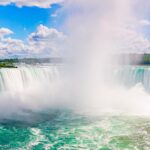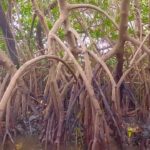Hey there! I’m here to chat with you about the world of mangroves in Florida. These incredible shrubs and trees that have a knack for thriving in salt water.
They’ve got some cool tricks up their sleeves, like specialized adaptations, which let them live in the ever-changing conditions of intertidal zones along marine coasts. And guess what? Florida’s coastline is blessed with these green wonders, playing a pivotal role in the state’s ecosystem.
Fun Fact: Mangroves are not just limited to tropical regions; they can be found in some temperate coastal areas too!
Origins of Mangroves
More than just salt-loving trees. They grow primarily in coastal saline or brackish water, especially in equatorial climates.
These plants have developed unique ways to breathe in extra oxygen and get rid of salt, which is pretty impressive considering the conditions would be lethal for most other plants. The term “mangrove” also refers to tropical coastal vegetation made up of these species.
Pro Tip: Mangroves have been around for a while! They first popped up during the Late Cretaceous to Paleocene epochs. Some fossils of mangrove palms are believed to be 75 million years old!
Types of Mangroves in Florida
Red (Rhizophora mangle)
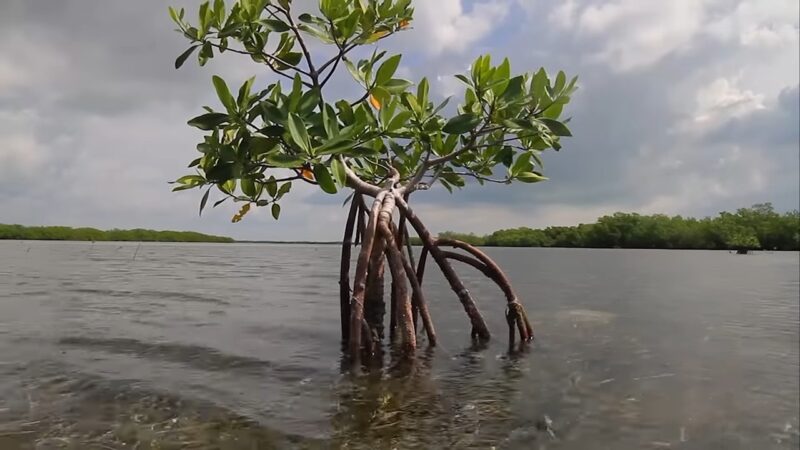
Description and Features: Red Mangroves are recognizable by their stilt or prop roots, red mangroves can survive in areas that are frequently inundated. They have a unique way of breathing through lenticels in their bark.
Habitat and Distribution: These guys are the champs of inundated areas. They prop themselves above the water and are quite the sight to behold.
Black (Avicennia germinans)
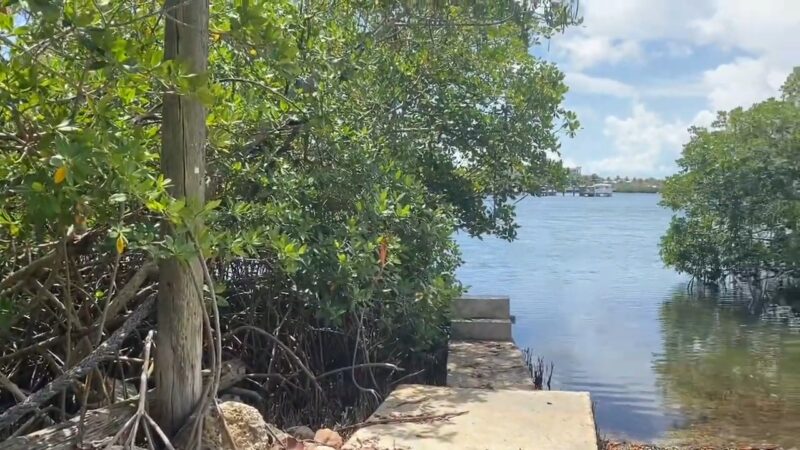
Description and Features: Black mangroves prefer higher ground and have these specialized root-like structures called pneumatophores. Think of them as breathing straws sticking out of the soil.
Habitat and Distribution: You’ll find them on slightly higher ground than the red mangroves. Their “breathing tubes” can reach heights of up to 30 cm!
White (Laguncularia racemosa)
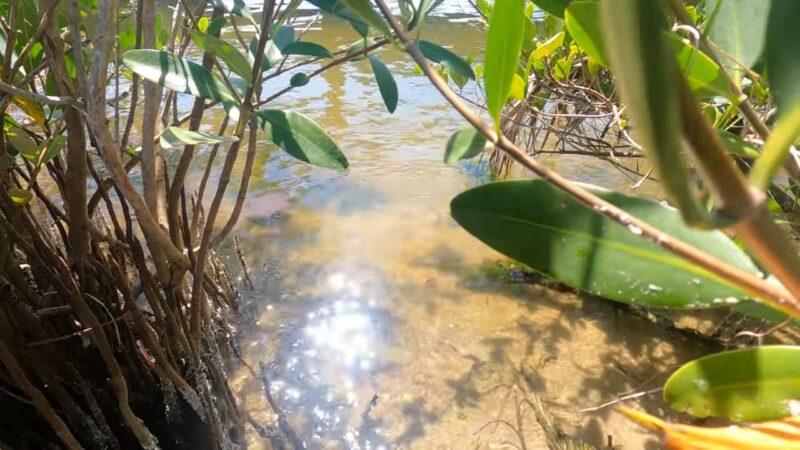
Description and Features: Not as flashy as their red and black counterparts, but equally important. Details about their specific features can be explored further.
Habitat and Distribution: Specific details about where they thrive best in Florida would need a deeper look.
Fun Fact: Mangroves have a unique way of reproducing. Many of them are viviparous, which means their seeds germinate while still attached to the parent tree. Talk about being ahead of the game!
Ecological Significance
Mangroves are like the superheroes of coastal areas. They play a crucial role in protecting the coastlines from erosion, especially during those pesky storm surges and even tsunamis. Their massive root systems are nature’s shock absorbers, dissipating wave energy effectively.
But that’s not all! They are biodiversity hotspots. From algae and barnacles to shrimps and mud lobsters, a myriad of creatures call the roots their home. And let’s not forget their carbon sequestration capabilities, making them vital in the fight against climate change.
Pro Tip: Mangroves are not just ecological warriors; they’re also economic saviors. They support sustainable coastal and marine ecosystems, which in turn benefit fisheries, tourism, and more.
Economic and Social Impact
More than just ecological wonders; they have a profound impact on the economy and society of Florida.
Importance for Fisheries
Mangroves are the nurseries of the sea. Their intricate root systems provide shelter for young fish, crustaceans, and other marine life. This boosts the local fisheries industry, ensuring a steady supply of seafood for both local consumption and export.
Tourism and Recreational Activities

The scenic beauty of mangrove forests attracts tourists from all over the world. Kayaking, bird-watching, and nature walks are just a few of the activities that these habitats offer. This influx of tourists contributes significantly to the local economy.
Traditional Uses by Local Communities
For generations, local communities have relied on mangroves for their livelihood. From using the wood for construction and fuel to harvesting honey and medicinal plants, mangroves have been an integral part of their lives.
Fun Fact: Did you know that there are more than 50 species of mangroves distributed worldwide along tropical coastlines? Florida is just one of the many places where these amazing trees thrive!
Threats to Florida’s Mangroves
Unfortunately, like many natural wonders, mangroves in Florida face several threats:
- Climate Change and Sea Level Rise: As sea levels rise due to climate change, mangroves are at risk of being submerged. This can lead to a loss of habitat and a decline in the number of trees.
- Urban Development and Habitat Destruction: The rapid urbanization of Florida’s coastline has led to the destruction of many habitats. This not only affects the trees but also the myriad of species that call these habitats home.
- Pollution and Waste Dumping: The dumping of waste and pollutants into the water can have detrimental effects. These pollutants can harm the trees and the creatures that live within their roots.
Pro Tip: Protecting mangroves is not just about saving trees; it’s about preserving an entire ecosystem that benefits both nature and humans.
Conservation Efforts
Thankfully, there are several initiatives in place to protect and conserve Florida’s mangroves:
- Legal Protections and Regulations: Various laws and regulations have been enacted to protect mangroves from destruction. These laws ensure that any development near habitats is done sustainably.
- Community-based Initiatives: Local communities play a crucial role in conservation. Many community-driven projects focus on educating the public about the importance of mangroves and how they can help protect them.
- Restoration and Reforestation Projects: Efforts are being made to restore damaged habitats and replant trees. These projects aim to bring back the lost glory of Florida’s mangrove forests.
FAQ
How do mangroves reproduce?
They reproduce through a unique method called viviparity, where seeds germinate while still attached to the parent tree.
Are mangroves found only in Florida?
No, tare dihey stributed worldwide along tropical coastlines, with over 50 species spanning 12 families.
What’s the difference between red, black, and white mangroves?
Each type has distinct features: Red have stilt roots, black have pneumatophores, and white have unique leaf structures.
Why are mangroves called the ‘nurseries of the sea’?
Their intricate root systems provide shelter for young marine life, making them vital for the marine ecosystem.
How can I contribute to mangrove conservation?
Supporting local conservation initiatives, participating in reforestation projects, and spreading awareness are great ways to contribute.
Wrapping Things Up
Mangroves are the unsung heroes of Florida’s coastline, playing a multifaceted role that benefits both nature and society. Their resilience in the face of threats showcases nature’s incredible adaptability.
As we move forward, it’s crucial to recognize the value of these green guardians and champion their conservation. By understanding, appreciating, and protecting mangroves, we ensure a brighter future for Florida’s coastal ecosystems and the communities that depend on them.

